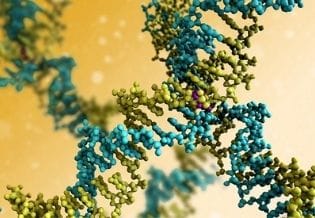Author Contributions
Academic Editor: Hem Dshukla, Professor in Department of Biology at University of Maryland, United states.
Checked for plagiarism: Yes
Review by: Single-blind
Copyright © 2018 Satyajit Patra
 This is an open-access article distributed under the terms of the Creative Commons Attribution License, which permits unrestricted use, distribution, and reproduction in any medium, provided the original author and source are credited.
This is an open-access article distributed under the terms of the Creative Commons Attribution License, which permits unrestricted use, distribution, and reproduction in any medium, provided the original author and source are credited.
Competing interests
The authors have declared that no competing interests exist.
Citation:
Introduction
Mice have been used as models of human disease because of their physiological and genetic similarities to humans 1. Since the development of the transgenic mouse in 1982 2, numerous manipulations of the mouse genome have been created to ultimately increase the understanding of human cancer. An initial study performed by Donehower et al. 3 introduced a null mutation of the human p53 suppressor gene into a normal p53 gene using homologous recombination. This was performed in mice embryonic stem cells to determine the role of the p53 in tumorigenesis and human malignancies.
The gene encoding p53 is considered a tumor suppressor gene when it appears in its non-mutated form. However, when mutation or deletion of the gene occurs, it is thought to act as an oncogene, inducing the formation of tumors 4. Mutations and loss of the p53 gene have been linked to human tumor formations in a number of organs such as the lung, breast, colon, esophagus, liver, bladder, ovary and brain 5.
Findings of p53 gene mutations have been associated with most human cancers and are connected to the tumors seen in human Li-Fraumeni syndrome, hereditary cancer vulnerability 6. Research on gene targeting in murine cells introduced the usage of mice as models for tumorigenesis and their importance in human tumorigenesis and cancer. Understanding these concepts in mice increases the possibility for cancer discoveries in humans.
By linking the p53 gene to tumorigenesis and cancers, further studies have been developed to associate the effect of a null or mutated p53 gene in very specific cell types. The null mutations of the p53 gene are essential when examining human tumorigenesis and cancers, and could contribute to the understanding of the formation of diseases and possible effective treatment approaches. An example of a study that elaborates on the research shows the effects of a mutated p53 gene that were isolated to mammary epithelium in an attempt to examine its role in murine mammary tumorigenesis 7. This is useful as a model for breast cancer 8.
The mice carrying the mutant p53 gene successfully showed how a null tumor suppressor gene affects tumor development 9. The results from this study were successful in comparing tumor formation in the different strains of mice. It was shown that wild type mice did not develop any tumors by the age of nine months, while cancerous tumor developments were extremely notable in mutant p53 homozygous mice. Of the 35 p53 homozygotic mice assessed, 74 percent developed abnormal growth of body tissue and tumor formation by six months 3.
The discovery of the p53 gene’s role in tumor formation is extremely important in assessing human disease. Because humans and mice are genetically similar, using the p53 knockout mouse is useful in giving researchers information to understand how this gene may affect tumor development. The model of a knockout mouse has proven useful in studying and modeling cancer, which is extremely beneficial as a human cancer model when trying to understand what causes cancerous tumor formations and how they could be prevented 10.
Homozygous p53 null mice showed to have a greater risk of tumor development compared to the wild type and heterozygous mice. Scientists created a successful model for studying the role of p53 as a tumor suppressor gene. This study showed that tumorigenesis occurred more often in mice deficient in the p53 gene, suggesting that tumorigenesis is more likely in its absence. Studies performed to create a successful platform that has been and continues to be used in studies to analyze tumor and cancer formation in attempts to create a human disease model, important for cancer research 11. The wild-type p53 protein plays key roles in controlling these facets of tumor progression, and loss of normal p53 function can be sufficient to predispose tumor cells to gain metastatic properties. In contrast, dominant p53 mutants that have gained oncogenic functions can actively drive metastasis through a variety of mechanisms 12.
References
- 1.Perlman R L. (2016) Mouse models of human disease: An evolutionary perspective. Evolution, medicine, and public health. 170-6.
- 2.Wei W Z, Jones R F, Juhasz C. (2015) Evolution of animal models in cancer vaccine development. , Vaccine 33, 7401-7.
- 3.Donehower L A, Harvey M, Slagle B L. (1992) Mice deficient for p53 are developmentally normal but susceptible to spontaneous tumours. , Nature 356, 215-21.
- 4.Gao P, Seebacher N A, Hornicek F. (2017) Advances in sarcoma gene mutations and therapeutic targets. Cancer treatment reviews. 62, 98-109.
- 5.Mantovani F, Walerych D, Sal G D. (2017) Targeting mutant p53 in cancer: a long road to precision therapy. The FEBS journal. 284, 837-50.
- 6.Zhou R, Xu A, Gingold J. (2017) Li-Fraumeni Syndrome Disease Model: A Platform to Develop Precision Cancer Therapy Targeting Oncogenic p53. Trends in pharmacological sciences. 38, 908-27.
- 8.Fry E A, Taneja P, Inoue K. (2017) Oncogenic and tumor-suppressive mouse models for breast cancer engaging HER2/neu. International journal of cancer. 140, 495-503.
- 9.Lozano G. (2007) The oncogenic roles of p53 mutants in mouse models. Current opinion in genetics & development 17, 66-70.
